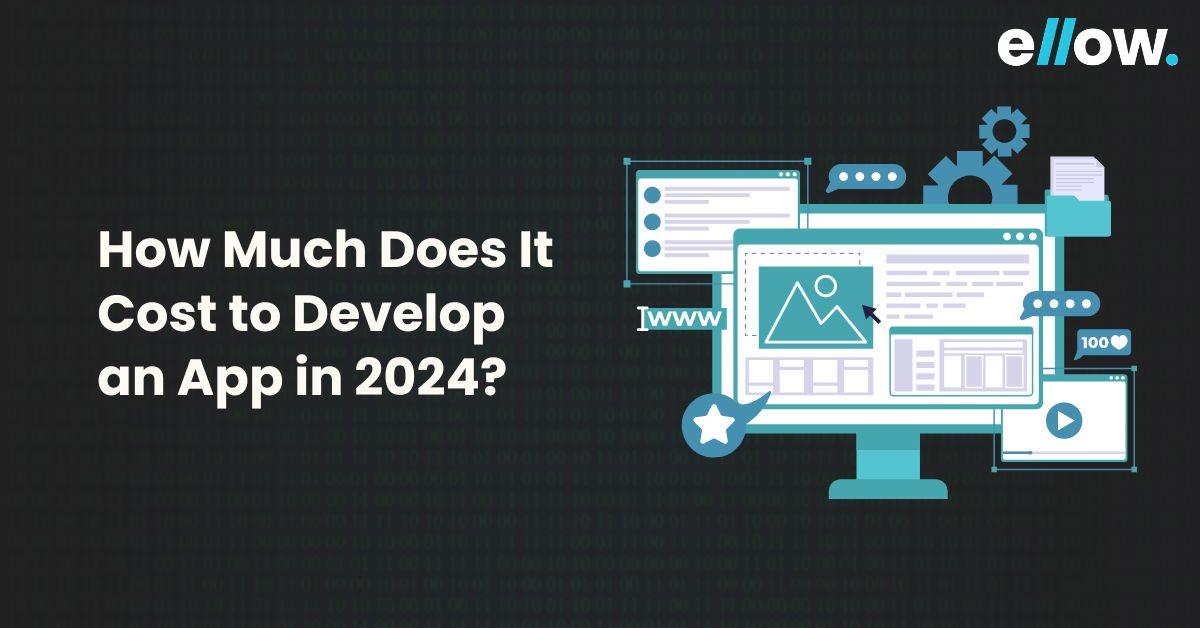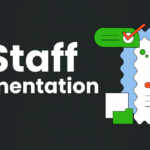Let’s build the future together.
Great ideas need great people. Partner with us to bring your vision to life, or take the first step in your career by joining our team of innovators.

In the fast-growing world of mobile applications, understanding the development cost is crucial for businesses. According to Grand View Research, the global mobile application market is projected to reach USD 565.40 billion by 2030.
This statistic highlights the immense potential and competitive nature of the industry. When embarking on a mobile app development project, one of the first questions developers and brands ask is, “How much does it cost to develop an app?”
The app development cost can vary significantly based on whether a company chooses to hire an external development firm or build the app internally. Each approach has its advantages and drawbacks, influencing the overall budget differently.
External firms bring expertise and efficiency, often incorporating advanced technologies like machine learning and augmented reality. Conversely, internal development might initially reduce costs but can lead to higher expenses over time due to inexperience and bug fixes.
Understanding these factors helps in creating a realistic app development budget.
The cost of developing an app in 2024 varies widely based on several factors. Simple apps with basic features like user registration and login can cost between $30,000 and $50,000 and typically take around 4.5 to 11 weeks to develop. Examples include calculators and weather apps.
Complex apps, which may have features like third-party integrations and real-time updates, can range from $100,000 to $250,000 and take about 7 to 16 weeks to develop. Social media and e-commerce apps fall into this category.
Advanced apps, featuring technologies such as artificial intelligence and virtual reality, can cost from $250,000 to over $1,000,000 and take about 11.5 to 16 weeks to develop. Examples include healthcare and financial apps. Building an app involves a team of developers, designers, and project managers working together to bring your idea to life.
Outsourcing vs. in-house app development represents a critical decision for companies embarking on app creation. In-house development offers direct oversight, seamless communication, and full control over the development team. However, it demands substantial initial investments, local talent availability, and the management of hiring processes. On the other hand, outsourcing involves collaborating with external agencies or teams, leveraging a global talent pool, and potentially reducing costs.
It provides flexibility, scalability, and access to specialized expertise, but can also introduce challenges such as time zone differences and less direct control over the development process. Choosing between these approaches hinges on factors like budget, project scope, desired control, and the need for specific skills. Companies often weigh the trade-offs between direct oversight and operational flexibility to determine the most suitable approach for their app development endeavors.
The location and structure of your development team play a vital role in determining app development costs. Nearshore outsourcing involves hiring a team from a nearby country, usually within a 2-4 hour time difference, offering better communication and manageable time overlaps. Offshore outsourcing, on the other hand, entails working with teams from distant countries, often with significant time zone differences, which can present communication challenges but offer substantial cost savings.
The team’s structure also affects costs. A well-balanced team typically includes roles such as business analysts, project managers, developers, designers, and quality assurance specialists. Each role contributes uniquely to the project, with varying rates based on their expertise and location. For example, developers in North America charge more compared to those in Southeast Asia. Balancing the team’s skills and the cost of their locations ensures efficient project management and effective cost control, impacting the overall success and budget of the app development project.
“Features and Functionality” in app development refer to the capabilities and user interactions that define the app’s purpose and usability. Each feature adds complexity and requires development time, directly impacting the cost. Basic features like user authentication and simple UI components are less costly to implement, whereas advanced functionalities such as real-time updates, geolocation services, and complex database interactions require more development effort and resources.
Features like push notifications, social media integration, and payment gateways enhance user engagement but come with additional costs for integration and maintenance. The choice of features should align with the app’s goals and user expectations, balancing functionality with budget constraints. Prioritizing essential features initially and planning for phased development can help manage costs while ensuring the app meets user needs effectively over time.
Choosing between Android and iOS for app development involves strategic considerations based on market demographics, development costs, and user experience goals. Android, with its larger global market share, offers a diverse user base and easier app distribution through the Google Play Store. However, the Android ecosystem is fragmented across various device types and operating system versions, necessitating more rigorous testing and adaptation.
iOS, on the other hand, boasts higher user engagement and spending, making it lucrative for monetization strategies like in-app purchases. The Apple App Store’s strict guidelines ensure a consistent user experience across devices, reducing fragmentation concerns. Development for iOS typically requires fewer device variations to support, streamlining testing and deployment processes.
Ultimately, the decision hinges on target audience preferences, budget considerations, and desired app functionality. Companies aiming for broader market penetration might opt for Android, while those prioritizing premium user experience and monetization potential might lean towards iOS. Balancing these factors ensures alignment with business objectives and optimal return on investment in app development.
Native vs. hybrid app development involves distinct approaches to building mobile applications. Native apps are developed specifically for a single platform, such as Android or iOS, using platform-specific languages (Java/Kotlin for Android, Swift/Objective-C for iOS). They leverage the full capabilities of the device, offering superior performance and seamless integration with platform features like GPS and camera. However, developing separate versions for each platform increases time and cost.
In contrast, hybrid apps use web technologies like HTML, CSS, and JavaScript wrapped in a native container. They can run on multiple platforms with a single codebase, reducing development time and cost. Hybrid apps bridge the gap between web and native apps but may sacrifice some performance and access to advanced device features.
Choosing between native and hybrid depends on factors like performance requirements, budget constraints, and target audience. Native apps excel in performance and user experience, while hybrids offer cost efficiency and broader platform coverage.
Visual Design Complexity in app development refers to the intricacy and sophistication of the graphical elements and user interface (UI) design. It encompasses the aesthetic appeal, usability, and brand identity reflected through the app’s visuals.
Apps with high visual complexity often feature custom-designed graphics, intricate animations, and immersive user interactions, aiming to deliver a unique and engaging user experience. Such designs require extensive collaboration between designers and developers to ensure technical feasibility without compromising artistic vision.
The cost implications of visual design complexity are significant, as it involves skilled design work, iteration cycles, and potentially longer development timelines. Companies may choose simpler designs to manage costs, while others prioritize elaborate visuals to enhance user engagement and differentiate their app in the competitive market. Balancing aesthetic appeal with practicality is crucial in determining how visual design complexity influences the overall development budget and user satisfaction.
Backend infrastructure in app development refers to the foundational technology that supports the functionality and performance of the application behind the scenes. It includes servers, databases, APIs (Application Programming Interfaces), and other components necessary for storing data, managing user interactions, and ensuring seamless operation.
The complexity of backend infrastructure impacts both development costs and the app’s long-term scalability and maintenance. A robust backend enables features like user authentication, data storage, real-time updates, and integration with external services.
Choosing the right backend architecture involves considering factors such as security requirements, scalability needs, and the technology stack best suited for the app’s functionality. While more complex infrastructures may incur higher initial costs and development time, they offer better performance, flexibility, and support for future enhancements and updates, making them crucial for building reliable and competitive mobile applications.
This phase is about laying the groundwork for your app project. It includes market research, defining business goals, and creating a detailed project roadmap. Development firms typically spend 10% of the total project budget on this stage, which can range from $1,200 to $11,000. The time required can vary widely, from 2 to 4 weeks, depending on the complexity of your app idea and the thoroughness of the research and planning conducted.
Design is crucial for attracting and retaining users. This stage involves creating wireframes, designing user interfaces (UI), and ensuring a smooth user experience (UX). Design costs typically account for 10-15% of the total app development budget, ranging from $2,500 to $10,000. The timeline for this stage is generally 3 to 4 weeks, although it can vary based on the complexity of the app’s design requirements.
The development stage involves turning designs and plans into a functioning app. It includes coding, integrating features, and building the app’s backend infrastructure. The cost here varies significantly based on the app’s complexity and the technologies used. Development costs usually make up the largest portion of the budget, ranging from $3,000 to $60,000 or more. The timeline can span from 2 to 6 months, depending on the app’s features and functionality requirements.
Once the app is developed, it goes through rigorous testing to identify and fix any bugs or issues. This phase ensures that the app functions correctly and delivers a smooth user experience. The cost for testing and deployment is typically less than $5,000, with a timeline of 2 to 4 weeks. This stage is crucial for launching a polished app that meets user expectations and minimizes post-launch support costs.
Understanding these stages and their associated costs allows you to plan your app development budget more effectively. Each stage contributes to the overall quality and success of your app, making it essential to allocate resources accordingly and ensure thorough planning and execution throughout the development process.
When estimating app development costs, several hidden factors can significantly impact your budget. Here are some key considerations often overlooked:
By addressing these factors early and incorporating them into your budget planning, you can better manage costs and ensure a smoother app development process.
Check this video out: How Much Does it Cost to Build An App… ???????????????? | Code Brew Labs
Maintaining an app is a continuous process that requires a range of ongoing expenses. These expenses typically range from 15-20% of the original development cost per year. Key areas to consider include hosting, monitoring, engagement, marketing, updates, and licenses.
The cost of hosting an app depends on the type of data it manages. Apps handling media such as photos, videos, or audio will require more powerful servers compared to text-based apps. Hosting services like Amazon AWS, Microsoft Azure, and Google Cloud typically charge between $70 and $320 per month, depending on the app’s requirements.
Effective monitoring is crucial for app performance and user satisfaction. Monitoring costs can vary widely, depending on the app’s scale and the number of users. Engaging with mobile analytics platforms can help you get a clearer estimate based on your app’s specific needs.
Marketing involves acquiring and retaining users. The cost-per-install (CPI) varies by platform and region, with iOS installs costing around $3.60 and Android installs about $1.22. Additional costs include user acquisition expenses for in-app purchases or subscriptions, which can go up to $75 and $70, respectively.
Regular updates are essential to fix bugs, add new features, and keep users engaged. While the actual process of releasing an update might be quick, the development time required for creating these updates can vary significantly based on the complexity of the app.
Using third-party technologies in your app can incur licensing fees. These fees depend on the number of devices and usage terms, and can be substantial. For instance, licenses could cost up to $120,000 annually for 50 devices.
Maintaining an app is a significant investment, but it’s necessary to ensure the app remains functional, competitive, and engaging for users.
The complexity level of an app significantly affects its development cost. A more complex app requires more time and resources, leading to higher expenses. Several factors contribute to an app’s complexity:
Understanding the app’s complexity during the planning stage is crucial to ensure the project stays within budget.
Building an app can significantly impact your business, but managing costs is crucial to maximize your return on investment (ROI). Here are some strategies to help you reduce app development costs:
Implementing these strategies can help you develop a high-quality app while keeping costs under control.
Developing an app in 2024 involves various costs that depend on multiple factors. These factors include the app’s complexity, design, platform, development team location, and additional features. Simple apps can cost around $10,000 to $50,000, while more complex apps can range from $50,000 to $200,000 or more.
It’s important to plan your budget carefully and consider ongoing maintenance and updates. By understanding these cost components, you can make informed decisions and successfully navigate the app development process.
The average cost to develop an app in 2024 ranges from $10,000 to $200,000, depending on factors such as complexity, design, platform, and additional features.
The complexity of an app significantly impacts its cost. Simple apps with basic features cost less, typically between $10,000 and $50,000. Complex apps with advanced functionalities can range from $50,000 to $200,000 or more.
Yes, the choice of platform affects development costs. Developing an app for a single platform, like iOS or Android, is generally cheaper than creating a cross-platform app that works on both.
Design and user interface play a crucial role in app costs. A more intricate and visually appealing design will require more time and resources, thus increasing the overall cost of development.
Yes, there are ongoing costs after the initial development. These include maintenance, updates, bug fixes, and potential feature enhancements to ensure the app remains functional and competitive.

Ten Real-World Ways Enterprises Are Using AI Teams to Build Faster in 2026

The Future of Tech Teams and How AI Augmented Engineering Is Reshaping Product Delivery

Staff Augmentation: A Complete Guide to Scaling Tech Teams
Please feel free to share your thoughts and we can discuss it over a cup of tea.
Get a quote
Ten Real-World Ways Enterprises Are Using AI Teams to Build Faster in 2026

Six Things to Consider When Hiring Remote Talent

ellow.io enters remote hires market with AI-based screening process